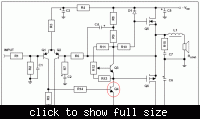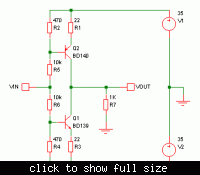Shayaan_Mustafa
Full Member level 5

No I don't forget anything. But actually when you ask me I just get confused what to say. Yes it is CB complementary for high voltage gain but unity current gain. Right.
So when you ask and I couldn't answer then just understand I am confused.
So now we have completed our this CB complementary stage fully?
- - - Updated - - -
No I don't forget anything. But actually when you ask me I just get confused what to say. Yes it is CB complementary for high voltage gain but unity current gain. Right.
So when you ask and I couldn't answer then just understand I am confused.
So now we have completed our this CB complementary stage fully?
So when you ask and I couldn't answer then just understand I am confused.
So now we have completed our this CB complementary stage fully?
- - - Updated - - -
No I don't forget anything. But actually when you ask me I just get confused what to say. Yes it is CB complementary for high voltage gain but unity current gain. Right.
So when you ask and I couldn't answer then just understand I am confused.
So now we have completed our this CB complementary stage fully?





